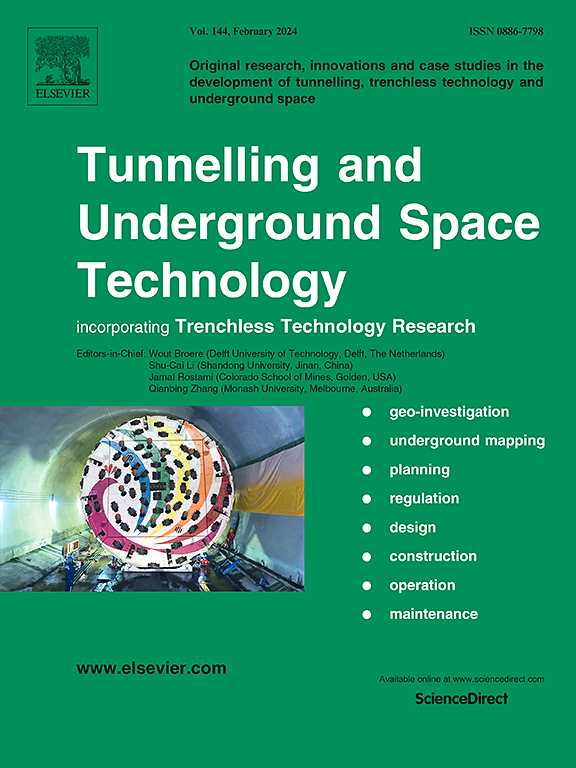Prediction of nonuniform large deformation in deep layered rock tunnels: Comprehensive application of data-driven and theoretical models
IF 6.7
1区 工程技术
Q1 CONSTRUCTION & BUILDING TECHNOLOGY
引用次数: 0
Abstract
The irregular and significant deformation often encountered in the construction of deep-layered rock tunnels presents a notable challenge. Precisely assessing the anisotropic true triaxial compression (TTC) strength of layered rocks is pivotal for anticipating nonuniform deformation in these tunnels. Machine learning (ML) methods offer distinct advantages in terms of cost-effectiveness and accuracy when predicting rock strength. This study utilized four ML algorithms to forecast the TTC strength of layered rocks. The input parameters encompassed minimum and intermediate principal stresses, loading angles (β, ω), and maximum and minimum uniaxial compression strengths of the surrounding rock. The dataset comprised 1548 strength data points derived from laboratory tests on 42 types of layered rocks, along with 47,476 physics-guided data points generated using MATLAB based on the rock failure criteria proposed by Feng et al. (2020) and Liu et al. (2023a). The entire dataset was partitioned into training and validation sets, with an additional test set employed to train and assess the performance of the proposed models. Additionally, an analytical solution for the redistribution stress state of the surrounding rock in deep-layered rock tunnels was derived. Introducing a nonuniform deformation prediction index (NDPI) based on the predicted TTC strength and stress state of the surrounding rock further enhanced the analysis. Evaluating NDPI values at various locations of tunnel sections offers a swift and effective means of anticipating nonuniform deformation during the tunnel design phase in layered rock tunnels. To validate its efficacy and reliability, the proposed method was applied to a deep carbonaceous slate tunnel.
求助全文
约1分钟内获得全文
求助全文
来源期刊

Tunnelling and Underground Space Technology
工程技术-工程:土木
CiteScore
11.90
自引率
18.80%
发文量
454
审稿时长
10.8 months
期刊介绍:
Tunnelling and Underground Space Technology is an international journal which publishes authoritative articles encompassing the development of innovative uses of underground space and the results of high quality research into improved, more cost-effective techniques for the planning, geo-investigation, design, construction, operation and maintenance of underground and earth-sheltered structures. The journal provides an effective vehicle for the improved worldwide exchange of information on developments in underground technology - and the experience gained from its use - and is strongly committed to publishing papers on the interdisciplinary aspects of creating, planning, and regulating underground space.
 求助内容:
求助内容: 应助结果提醒方式:
应助结果提醒方式:


